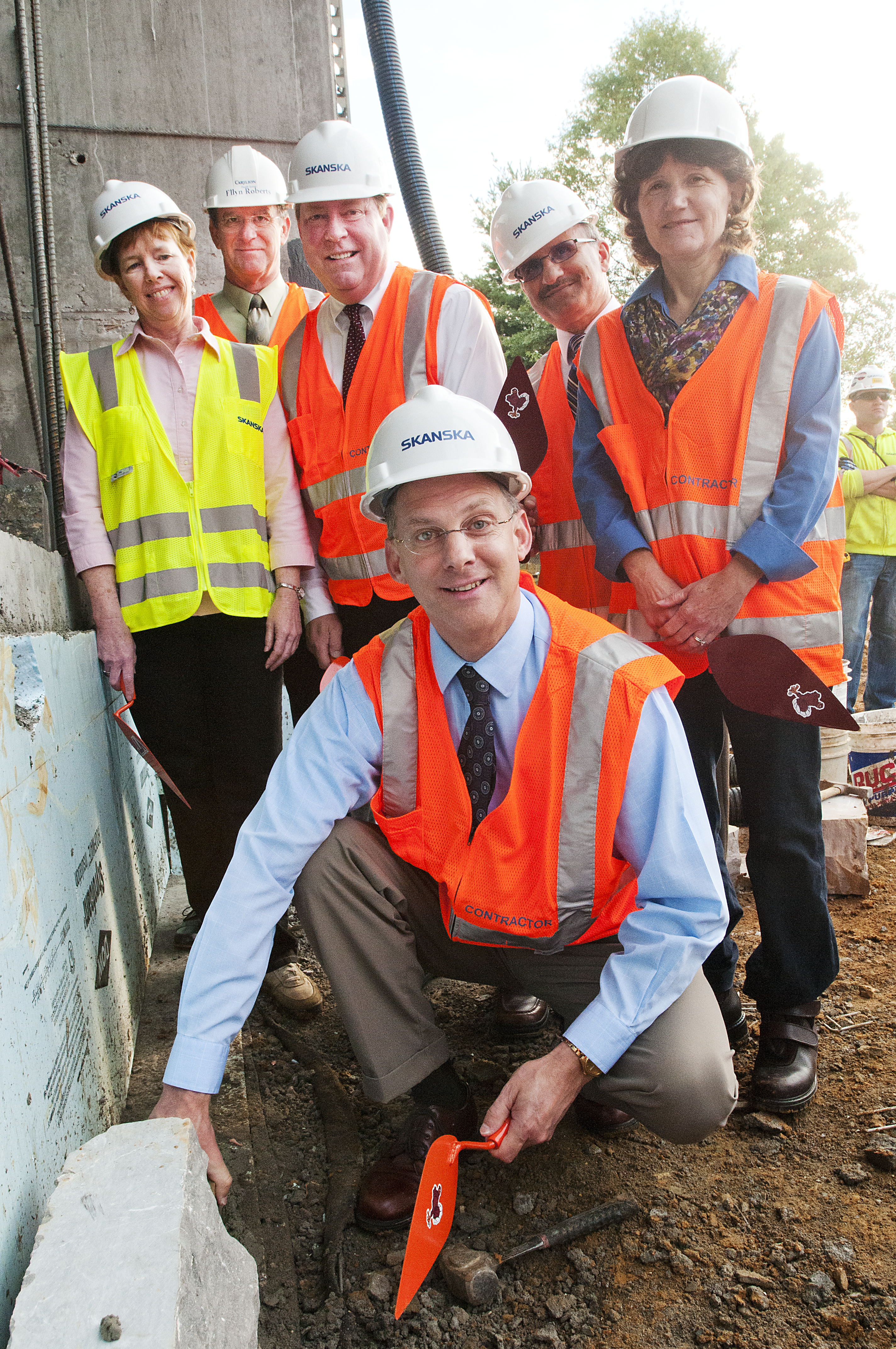First Hokie Stone on Human and Agricultural Biosciences Building 1 marks new phase of construction

With a Virginia Tech-emblazoned trowel in his hand, College of Agriculture and Life Sciences’ Dean Alan Grant recently laid the first Hokie Stone on the Human and Agricultural Biosciences Building 1, marking the beginning of the next phase of construction for the new research facility.
“This is more than just a cornerstone of a new building,” Grant said. “This is the foundation for some of the most cutting-edge research going on at Virginia Tech. This will be a place where some of the biggest challenges of the world will be tackled and solved.”
The new 93,860-square-foot building at the corner of Duck Pond Drive and Washington Street is the first of four that will eventually make up the Human and Agricultural Biosciences Precinct, where many departments within the college will have research facilities. Researchers from the departments of biological systems engineering and food science and technology will be in the building now under construction.
People can track construction on a comprehensive website that includes a webcam, time-lapse images, videos of students talking about the impact of the building, and monthly construction updates. The progress of the building is documented on the Twitter feed, @CALSconstruct.
The $53.7 million dollar facility — which is being built by Skanska and paid for with state funds — will be completed in late 2013.
Administrators and faculty members took turns laying Hokie Stones on the new building’s exterior, marking an historical moment for the college. Members of both departments that will be in the new building signed the Hokie Stones before they were cemented into the structure.
“This building and its the state-of-the-art equipment will allow our faculty to explore new avenues of nanotechnology, bioenergy, biomaterials, food safety, and food packaging and processing that will make a real and meaningful difference in the world,” said Saied Mostaghimi, associate dean of research and graduate studies. “The pilot-scale facility will enhance our ability to facilitate commercialization of new technologies developed by our faculty.”
Mostaghimi said by housing two departments under one roof, researchers, graduate students, and undergraduates participating in research projects will be able to create a synergy among scientists where ideas are shared, hypotheses are debated, and the challenges of the world are tackled. Common areas will allow researchers to gather to share ideas and develop new ways to solve complex problems facing society.
Mary Leigh Wolfe, head of the Department of Biological Systems Engineering, said the researchers in the new building will develop new biofuels and biomaterials, find ways to combat addiction through novel vaccines, and work on keeping pathogens from contaminating water, among other things.
“Our new facility will allow us to expand into areas where our research can make a difference in the way we live, eat, and function as a society,” she said.
Joe Marcy, head of the Department of Food Science and Technology, said the new building will be home to a biosecurity level 2 certified food processing facility, allowing scientists to conduct experiments involving E. coli, Salmonella, and other pathogens that require a heightened level of security and training. It will also have a two-story pilot food processing plant that has the capacity to house a variety of commercial food production equipment.
“We look forward to utilizing our new research facilities to make discoveries that impact not only the state, but the world at large,” he said.
The building will also be environmentally friendly and have a LEED certification, a designation given by the U.S. Green Building Council for structures that utilize the very best in energy and environmental design.




